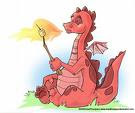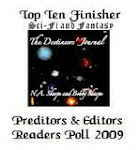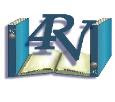The real secret of magic is that the world is made of words, and that if you know the words that the world is made of you can make of it whatever you wish.
~Terence McKenna
Magic is most associated to occur in the fantasy genre, but the truth of the matter is, elements of magic sometimes crossover into other genres. Think of the magic of reanimation at the hands of a mad scientist in Mary Shelly’s horror classic, Frankenstein, or the blend of science and fantastical make believe in Jules Vern’s classic 20,000 Leagues Under the Sea.
Certain elements of books that may place it into a fantasy category (or sub-category) are things like a quest: a journey spurred by a prophecy or some foresight gained in a dream. In this pursuit the hero and his comrades set forth on adventure to gain some higher level of knowledge often used to save an individual or a world that propels them onward. It is always a search for something important and difficult to find. There are always challenges and obstacles along the way allowing the hero to gain knowledge, strength, self-confidence and the determination to let nothing stand in his way. The journey of the quest is just as important as the achievement of accomplishing the task for this is where the true knowledge and power are gained. This is one of the fundamentals of fantasy for children and young adults that teaches an important lesson – there is an inner strength inside everyone that can be drawn out with the proper emphasis on knowledge and a growing self-confidence; you just need the proper motivation and determination to draw it out.
Often the cast of characters will classify the novel in the realm of fantasy. There are classic characters such as wizards and dwarves, elves and dragons, but there are countless creatures taken from mythology (and authors own imaginations) that can propel the story into an epic adventure. If you are unfamiliar with the characters from the realm of fantasy, The Destineers’ Journal of Fantasy Nations serves as a good guide. It describes many familiar fantasy creatures, such as dwarves, elves, dragons and those not as familiar such as the Formorians, a savage tribe of giants; the Grindylow, green gangly underwater beings that live in icy waters; the Pech, members of the gnome family credited as aboriginal builders of many of the ancient megaliths; in the journal, their stories are told from the voice of a 15 year old girl who has studied these beings on her epic journey through the Netherscape. The appearance of certain imaginative beings in a fantastical adventure is inevitable, and often a reader may gleam reflections of a parallel to their world and the fantastical realm and begin to identify with the hero and his companions as they weave the tapestry of their story. The fantasy world is a familiar world after all. Who has not grown up in the realm of fairy tales in the familiar world of Once Upon a Time? Just a thought....
Like this post? Tweet it. Go ahead, you know you want to!
LitLinks
4 days ago


























3 comments:
Your fantasy world sounds so intriguing. I'm thinking about an historical fiction with a touch of fantasy, one of these days.
Bev
http://beverlystowemcclure.blogspot.com
Hi Beverly!
I think that fantasy and historical fiction blend perfectly. I think you could write this genre beautifully - I know I'd buy it! I'll be watching for this project from you!
Nancy
http://nasharpe.blogspot.com
Well Karen, your writing is magical, it is a memoir so you are the hero, and you definitely have inner strength :)
Nancy
http://nasharpe.blogspot.com
Post a Comment